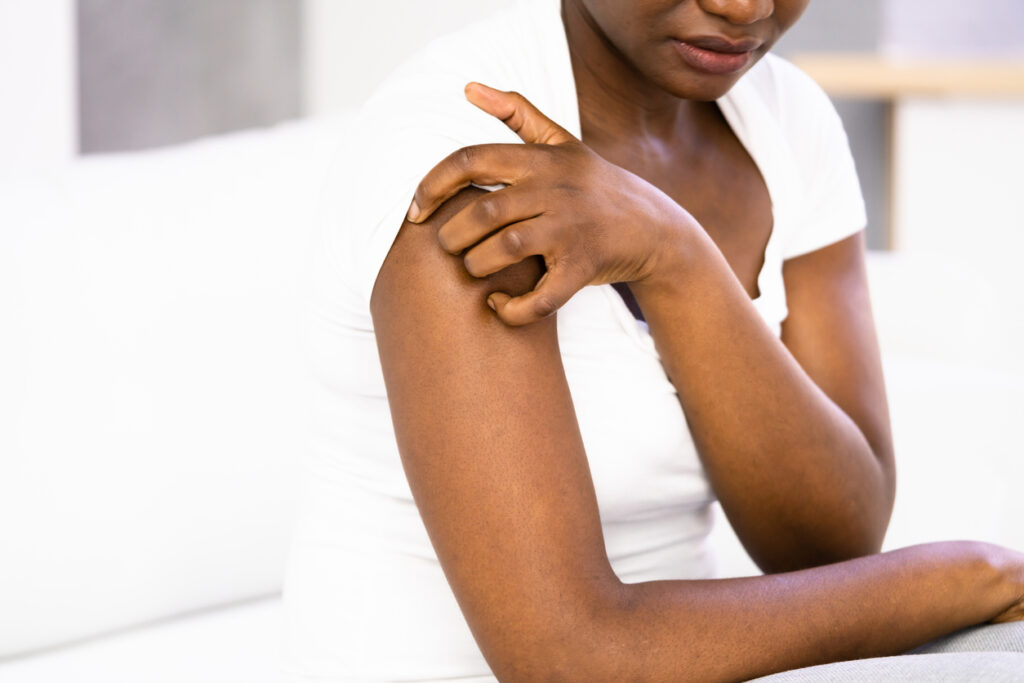Roflumilast cream 0.15% (Zoryve, Arcutis) reduced lesion clearance and eased itch in individuals with atopic dermatitis (AD) regardless of race, ethnicity, and Fitzpatrick skin type, new pooled subgroup analysis results from the Phase 3 INTEGUMENT-1 and -2 trials. The results will be presented at the European Academy of Dermatology & Venereology (EADV) Congress in Amsterdam.
At Week 4, patients taking roflumilast cream showed greater Validated Investigator Global Assessment for AD (vIGA-AD) success compared with vehicle-treated patients were observed regardless of race (White: 32.3% vs. 13.3%; Black or African American: 25.8% vs 11.5%; Asian: 33.7% vs. 21.8%; Others: 33.2% vs. 13.7%), ethnicity (Hispanic or Latino: 32.9% vs. 16.5%; Not Hispanic or Latino: 31.1% vs 13.8%), or Fitzpatrick score (I–III: 33.0% vs. 13.4%; IV–VI: 29.2% vs. 14.8%). In the study, vIGA-AD Success was defined as vIGA-AD value of 0 or 1 plus a 2-grade improvement from baseline.
“It is critical that clinical trials reflect the diversity in the world around us, and the new findings give us confidence that roflumilast cream, 0.15% is safe and effective for patients with AD who have diverse skin types,” Vimal H. Prajapati MD, FRCPC, DABD, clinical associate professor at the University of Calgary and co-founder/co-director of the Skin Health & Wellness Centre, Dermphi Centre, Dermphi Shop, and Dermatology Research Institute in Calgary, Alberta, Canada, tells TDD.
Roflumilast-treated patients also achieved a greater improvement in itch as measured by reductions in Worst Itch-Numeric Rating Scale (WI-NRS) Success, defined as ≥4-point improvement in patients 12 years of age and older with baseline WI-NRS score ≥4, at Week 4 with consistent results regardless of subgroup (White: 33.5% vs. 16.5%; Black or African American: 30.6% vs. 21.0%; Asian: 25.4% vs. 7.9%; Others: 34.3% vs. 22.7%), ethnicity (Hispanic or Latino: 37.4% vs. 30.5%; Not Hispanic or Latino: 30.9% vs. 13.8%), or Fitzpatrick score (I–III: 35.5% vs. 15.0%; IV–VI: 27.3% vs. 18.2%). Similar findings were observed for additional endpoints including achievement of vIGA-AD score of ‘Clear (0)’ or ‘Almost Clear (1)’ and 75% improvement in the Eczema Area and Severity Index (EASI-75)
The Incidence of Treatment Emergent Adverse Events (TEAEs) was low in both roflumilast cream – and vehicle-treated patients. The incidence of TEAEs in roflumilast cream -treated patients was generally similar across subgroups. Local tolerability was also favorable. The most common adverse reactions were headache, nausea, application site pain, diarrhea, and vomiting.
There are challenges when diagnosing and treating AD in darker skin tones. “AD looks different on lighter skin than darker skin,” he says. “The goal is to find therapies that are effective, safe, well tolerated, and not associated with barrier dysfunction or hyper- or hypopigmentation.”
Topical corticosteroids can cause thinning andoccasionally pigmentary changes of the skin, especially hypopigmentation in darker skin, he notes.


